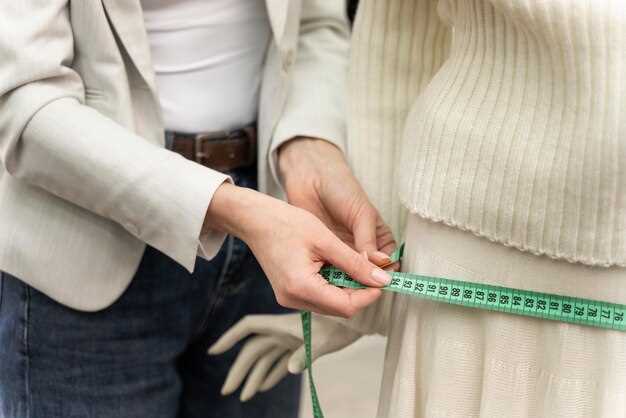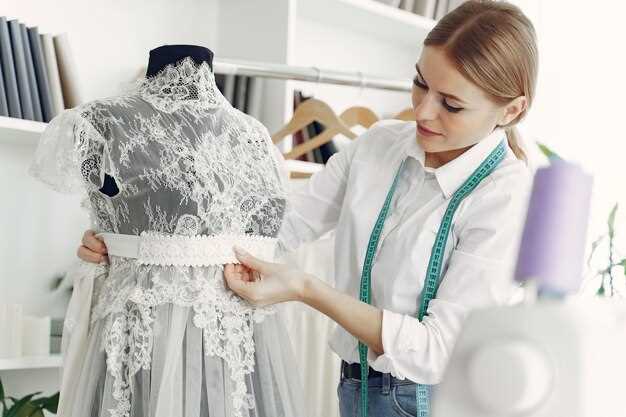To ensure your wedding dress fits flawlessly, prioritize professional alterations as soon as you purchase it. Dress sizes vary significantly between designers, so relying solely on the size tag can lead to disappointment. Consult with a skilled tailor to assess the initial fit and discuss your vision. This collaboration provides an opportunity to identify any necessary adjustments, whether it’s taking in or letting out the seams, shortening the hem, or altering the neckline.
Communicate openly with your tailor about your preferences for the dress’s overall appearance. Bringing reference photos or Pinterest boards can provide clarity. For example, if you desire a more defined waistline, a skilled tailor can suggest adding darts or a corset. Focusing on specific elements enhances the dress’s silhouette and ensures it complements your body shape perfectly.
Timing is vital when coordinating dress alterations. Schedule your first fitting at least two months before the wedding date, allowing for multiple adjustments and fittings if necessary. This timeline accommodates any additional changes, ensuring you’re satisfied with every detail. Reducing stress during this process guarantees that you can confidently walk down the aisle in a dress that feels tailor-made for you.
Understanding the Importance of Alterations for Your Dress

Prioritize fitting adjustments to ensure your wedding dress complements your figure perfectly. A well-tailored dress enhances your silhouette, making you feel confident and beautiful on your special day.
Focus on specific areas that may require attention, such as the bodice, waist, and hemline. Tailors can reshape these parts for a more flattering fit, ensuring that the dress moves with you. Pay close attention to the neckline and sleeves; even minor tweaks can elevate the overall look.
Schedule multiple fittings to allow for adjustments as your body may change leading up to the wedding. Bringing your wedding shoes to each fitting will help achieve the ideal length. Communicating your vision to the tailor ensures they understand your style preferences, helping to avoid misunderstandings.
Consider adding personal touches during alterations, such as changing the length of the train or adjusting embellishments. This customization reflects your style and adds a unique charm to your dress.
Investing in alterations can make a significant difference in how you feel throughout your wedding day. A tailored dress not only looks stunning but also allows for ease of movement, so you can focus on enjoying your celebration.
Identifying Common Fit Issues in Wedding Dresses

Check for these common fit issues to ensure your wedding dress looks its best:
- Too Tight: If the dress restricts movement or feels uncomfortable, consider letting out seams if the fabric allows.
- Too Loose: Excess fabric around the waist or bust can be taken in for a snugger fit. Consult your tailor to assess which areas need adjustments.
- Bust Issues: A gap or overflow at the bust area signals a need for a more tailored fit. A good alteration may include adjusting the neckline or adding supportive cups.
- Length Problems: Check the hemline. The ideal length should graze the floor without dragging. Adjust the hem accordingly for comfort and style.
- Awkward Armholes: If you experience tightness or gaping under the arms, ask for a slight adjustment to improve mobility.
- Loose Straps: Eliminate slippage with adjustable or fitted straps that securely hold the dress in place.
Addressing these issues with a skilled tailor ensures that your wedding dress complements your body perfectly, allowing you to shine on your special day.
Choosing the Right Seamstress for Your Alterations

Select a seamstress with extensive experience in wedding dress alterations. Look for someone who specializes in bridal wear and has a strong portfolio showcasing their previous work. Online reviews and recommendations from friends can provide valuable insights into their skills and professionalism.
Meet for a Consultation
Arrange an initial meeting to discuss your specific needs and preferences. During this consultation, pay attention to how the seamstress communicates. A good seamstress listens attentively, asks the right questions, and offers suggestions tailored to your vision.
Check for Expertise
Inquire about their techniques. A skilled seamstress should be proficient in intricate alterations such as taking in seams, adjusting hemlines, or adding embellishments. Ensure they understand the structure and fabric of your dress, as this knowledge plays a critical role in achieving a flawless fit.
Timing Your Alterations: When to Start the Process
Begin your alteration process at least 8 to 12 weeks before your wedding day. This timeline allows adequate time for multiple fittings and adjustments without added stress. Schedule your first fitting soon after you purchase your dress or once it arrives–this gives you insights into necessary adjustments.
Be prepared for potential changes in your body leading up to the wedding. Regular fittings every few weeks accommodate these adjustments. If you plan to lose weight or tone up, communicate this with your seamstress, who can adjust the fit accordingly while considering these changes.
Factor in the availability of your seamstress. Some may book up quickly, especially during peak wedding season. Starting early ensures you secure a skilled professional and have plenty of time for alterations without rushing.
Finalize your bridal accessories before your last fitting. Wearing your shoes and undergarments at this fitting ensures the dress fits perfectly with all elements in place. Aim for this fitting around two weeks before the wedding to allow for any last-minute tweaks.
Types of Alterations: Hemming, Taking In, and More
For achieving that perfect dress fit, understanding the types of alterations is key. Hemming is one of the most common alterations, allowing the length of the dress to be adjusted. Whether you prefer a tea-length gown or a floor-sweeping style, this alteration ensures your dress doesn’t drag on the ground. Measure your desired length carefully, keeping in mind the shoes you’ll wear on your wedding day.
Taking in is another significant alteration that shapes the dress around your figure. If the bodice is too loose, this adjustment refines the silhouette. It’s best to consult with your tailor to determine how much to take in, ensuring the fit is both comfortable and flattering. Pay attention to the bust, waist, and hip measurements for a harmonious look.
Other Common Alterations
Letting out is the opposite of taking in, and it becomes necessary if you find the gown too snug after trying it on. This adjustment offers flexibility for both pre- and post-wedding day needs. Additionally, adjusting straps, whether shortening or lengthening, can provide comfort and enhance the overall appearance. Straps should allow for ease of movement without sacrificing style.
Specialty Adjustments
Consider embellishments like beading or lace; altering these features may require extra care. If the dress has a train, you might want to adjust its length or busting it up for easier movement during the reception. Each realm of alteration focuses on framing your unique style while ensuring comfort, so discuss all options with your tailor to achieve the most flattering result.
What to Expect During Your Fitting Appointments
Arrive on time and bring the undergarments and shoes you’ll wear on your wedding day. This ensures accurate measurements and helps visualize the complete look. Expect to try on your wedding dress multiple times throughout the fitting process. Each fitting focuses on different areas, including the bust, waist, and hemline.
Communication with Your Tailor
Be open about your preferences and any concerns. Your tailor appreciates feedback, which aids in making adjustments that align with your vision. Don’t hesitate to suggest specific changes or adjustments, as your insights are valuable. Ask questions if you’re unsure about anything–from fabric to fit–this keeps the process straightforward and collaborative.
Adjustment Timeline
Typically, plan for at least two to three fittings. The initial session focuses on basic adjustments, while subsequent ones fine-tune the details. Schedule your fittings well in advance of the wedding date, ideally six to eight weeks prior. This timeline accommodates unexpected changes or additional tweaks.
Budgeting for Wedding Dress Alterations
Allocate a specific portion of your wedding budget to dress alterations. Aim for 10% to 15% of your total dress cost. This range helps accommodate necessary adjustments without financial strain.
- Research Average Costs: Gather information on local alteration prices. Expect to pay between $150 and $600, depending on complexity and location. This includes hem adjustments, taking in seams, and adding or removing details.
- Consult with Tailors: Schedule fittings with several seamstresses or tailors. Ask for detailed quotes. Understand what services are included and evaluate their expertise.
- Factor in Multiple Appointments: Plan for at least two to three fittings. Each session incurs a fee, so budget accordingly. Some adjustments can only be noted during fittings.
- Consider Additional Services: If needed, account for specialty services like custom embellishments or changing the dress structure. These can increase overall costs.
- Allocate for Emergencies: Set aside a small amount for unexpected alterations that may arise close to your wedding date. This ensures you remain financially prepared.
Keep an open line of communication with your chosen tailor. Regular updates on your budget will help manage alterations effectively, ensuring you achieve the perfect fit without overspending.
Maintaining the Fit: Tips for the Big Day
Choose the right undergarments to support your figure and enhance the dress’s silhouette. Opt for a strapless bra or shapewear that fits comfortably without causing any bulges. Consider having a fitting session wearing the same undergarments you’ll wear on your wedding day.
Schedule a final fitting one to two weeks before the wedding. This ensures any last-minute adjustments address changes in your body shape or size. Pay attention to how the dress feels when you move; make sure it’s both flattering and comfortable.
Keep your dress in the right environment before the big day. Store it in a cool, dry place and avoid direct sunlight to prevent discoloration. If possible, hang it in a garment bag to keep it safe from dust and damage.
Invest in a good garment rack to hang the dress on the day of the wedding. This will prevent it from wrinkling and allow easy access for last-minute adjustments. If there’s any slight wrinkling, a handheld steamer can work wonders for a quick refresh.
Have a trusted friend or wedding planner carry a small emergency kit with sewing supplies like safety pins, fabric tape, and scissors. These tools can be lifesavers if you encounter any unexpected wardrobe malfunctions.
| Tips | Details |
|---|---|
| Undergarments | Wear supportive, fitted undergarments to enhance the dress’s fit. |
| Final Fitting | Book a fitting session 1-2 weeks prior to ensure the perfect adjustment. |
| Storage | Keep the dress in a dry, cool place, away from sunlight. |
| Emergency Kit | Include essentials like safety pins and fabric tape for quick fixes. |
On the day of the wedding, avoid drinking too much water right before getting dressed to prevent feeling bloated. Enjoy light, healthy snacks and be mindful of how you move to keep the dress fitting comfortably.
Finally, take a few moments to check yourself in the mirror before walking down the aisle. Adjust anything that isn’t sitting right. Confidence in your fit will shine through in every photo and moment of your special day.
Video:
Bride’s Weight Loss Journey – The Perfect Dress
Bride’s Weight Loss Journey – The Perfect Dress by THE PROPOSAL 145,363 views 7 years ago 5 minutes, 13 seconds
Q&A:
What are the common types of alterations for wedding dresses?
Common types of alterations for wedding dresses include hem adjustments, taking in or letting out seams, changing the neckline, altering the train length, and adding or removing embellishments. Hem adjustments are necessary to ensure the dress fits the wearer’s height and shoes. Seams can be tailored to fit the body more snugly or comfortably, and necklines can be modified to suit personal style preferences. Alterations can enhance the overall look and comfort of the gown, ensuring it looks its best on the wedding day.
How much time should I allow for wedding dress alterations?
It is advisable to allow at least 2 to 3 months for wedding dress alterations. This timeframe accommodates multiple fittings and any needed adjustments. The process typically involves an initial fitting to assess needed changes and subsequent fittings to refine the fit of the dress. Starting the alteration process early ensures that there is ample time to address any unforeseen issues and allows the bride to feel relaxed about her dress fitting perfectly on her special day.
Can all wedding dresses be altered, regardless of the original design?
Most wedding dresses can be altered, but the extent of changes depends on the gown’s design and fabric. Simple styles with basic patterns tend to allow for more straightforward alterations, while heavily embellished or intricately designed dresses may present more challenges. It’s important to consult a skilled tailor who specializes in wedding dresses, as they can provide advice on what alterations are feasible and ensure that the integrity of the design is maintained during the process.
What should I bring to my first fitting for dress alterations?
At your first fitting for dress alterations, it’s beneficial to bring the shoes you plan to wear on your wedding day, any undergarments you will wear with the dress, and any accessories like a veil or jewelry. Wearing the shoes will help determine the right hem length, while undergarments ensure the dress fits correctly and comfortably. Additionally, discussing your vision for the alterations with the tailor will help guide the process.
How can I find a good tailor for my wedding dress alterations?
Finding a good tailor for wedding dress alterations involves a few steps. Start by asking for recommendations from friends, family, or your wedding planner, as personal experiences can lead you to skilled professionals. Additionally, check online reviews and ratings of tailors in your area. Meeting with the tailor for a consultation can also help gauge their expertise and understanding of your vision. Look for someone who specializes in bridal wear and offers a clear communication style to ensure that your needs are met.
What types of alterations can be done to wedding dresses?
Wedding dress alterations can include a variety of modifications to achieve the perfect fit. Common alterations involve adjusting the hemline to the desired length, taking in or letting out seams for a better fit around the bust, waist, and hips, and altering straps or sleeves for comfort and style. Many brides also opt for changes to the neckline or adding closures like buttons or zippers. Additionally, some brides may want to add or remove embellishments such as lace, beads, or sashes. Each dress and bride presents unique needs, so discussing these options with a skilled tailor is important.
